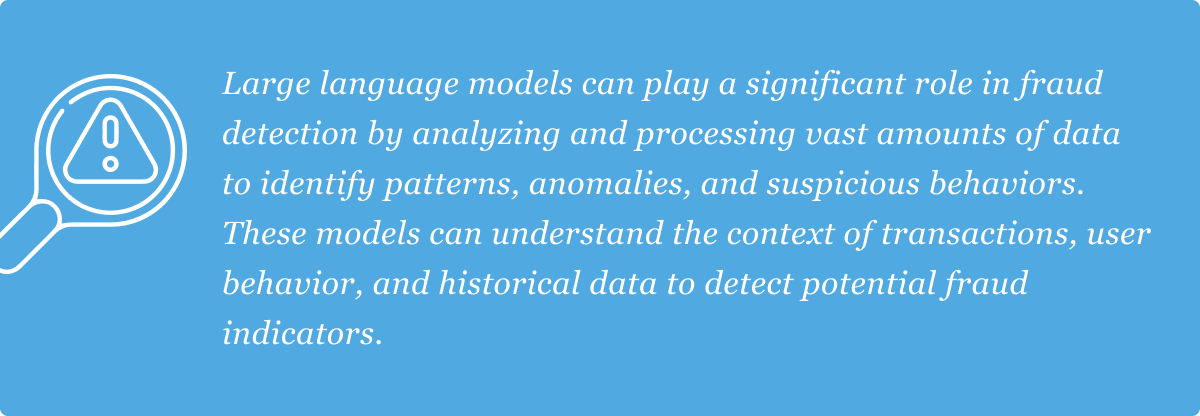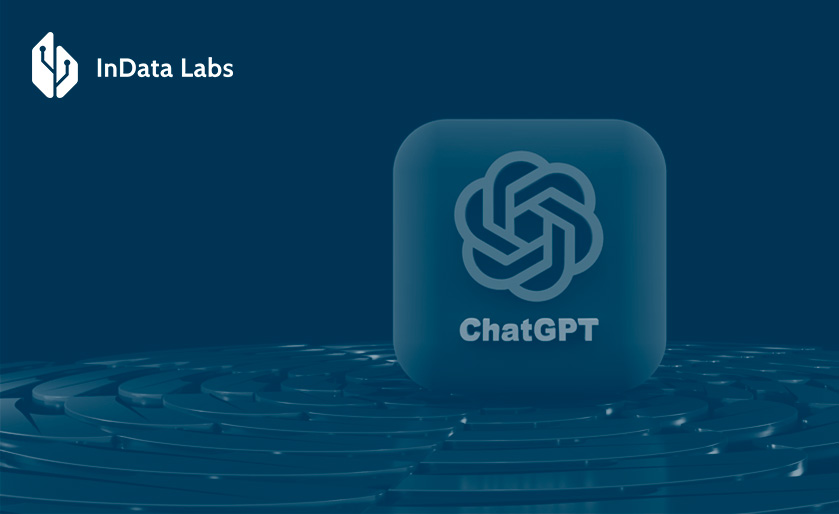Get ready to explore how large language models are revolutionizing several industries. This article “Best Applications of Large Language Models“ will take you on a journey to explore the top applications of these powerful tools that have become essential in recent years.
They are used in healthcare, finance, entertainment, and education, among others. These large language models app have changed the way we understand and work with human language. They help us to create more accurate and advanced systems for various purposes. In this article, we will explore the best large language models applications.
We will discuss the benefits and challenges of application, showing how large language models are transforming our communication and interaction with technology.
Whether you’re a developer, marketer, or just curious about the latest trends in AI applications, this article will give you the best applications of large language models app. So, let’s dive in and discover the best ways we can use these models, including large language models use cases!
What are large language models?
Large language models are AI software that has been trained on massive amounts of text data. They use advanced computer techniques called deep learning -machine learning models algorithms to understand and analyze huge amounts of language information, including language app names.
This helps them create text that sounds just like how a person would write or speak, including machine language understanding, making it hard to tell the difference between human and machine-generated language.

Source: Unsplash
These models can be used to perform various NLP tasks, such as language translation, content creation, sentiment analysis, NLP solutions, and more. Large language models have been around for several years. Still, it was not until the recent advancements in deep learning algorithms, computational power, and text data availability that they became a game-changer in artificial intelligence.
Thanks to the incredible performance of these models, they have been employed in large language models applications, from chatbots and virtual assistants to personalized content creation and language translation.
It’s important to note that LLM is continuously evolving, with ongoing research and development aimed at enhancing its capabilities. As these models become more sophisticated and refined, their potential for transforming various domains continues to expand, opening up new possibilities for human-computer interaction and communication.
Applications of large language models
Large language models have found applications in a wide range of fields, transforming the way we interact with technology and enabling new possibilities. Let’s explore a list of large language models.
Natural language processing (NLP)
Natural Language Processing (NLP) is a field of artificial intelligence that focuses on the interaction between humans and machines using natural language.
Large language models are a key component of NLP, as they can be used to understand and generate natural language. This makes them incredibly useful for a wide range of applications, including challenges in natural language processing, from chatbots and virtual assistants to sentiment analysis and content creation.

Another advantage of NLP is that it can automate tasks that would normally need humans to do them. For example, an LLM can be used to automatically generate summaries and synopses of long documents, making it easier for people to digest complex information.
Chatbots and virtual assistants
One of the most popular LLM applications is the development of chatbots and virtual assistants. These models can understand how people ask questions and give answers that are very similar to what a person would say.
This has enabled businesses to improve their customer service by providing 24/7 support to their customers without the need for human intervention.
LLM Applications can be trained on a vast amount of text data to improve their performance in understanding the nuances of natural language. They can also be fine-tuned to cater to specific domains, such as finance, healthcare, and education, to provide personalized responses to queries.

Source: Unsplash
Additionally, they can be integrated with other AI applications, such as speech recognition and natural language understanding, to provide a more seamless and natural interaction between the user and the system.
However, there are also limitations to the use of LLM in chatbots and virtual assistants. For example, they may not always understand the context of the user’s query and may provide irrelevant responses.
Additionally, the lack of emotional intelligence in these models may lead to a less empathetic interaction with the user. Therefore, it is essential to strike a balance between the use of large language models and human intervention in providing customer service.

They can be used to answer frequently asked questions, provide product recommendations, and even assist with medical diagnoses. This can save time and resources for businesses, as well as improve the overall customer experience.
Despite their many benefits, chatbots and virtual assistants also have some limitations. One of the main challenges is their ability to understand and respond to complex queries. While they are effective at answering simple questions and providing basic information, they can struggle with more complex requests.
Content generation and automation
Content generation and automation are areas where LLM have made a significant impact. That refers to the process of creating written or multimedia content using Generative AI applications.
An LLM application can generate articles, blog posts, social media captions, product descriptions, and more. By training on vast amounts of text data, these models can capture the style, tone, and structure of different genres and produce coherent and contextually relevant content.
Large language models can also assist in content automation by generating content based on specific parameters or prompts. For example, an E-commerce website can use these models to automatically generate product descriptions by providing information about the product’s features, benefits, and specifications.

Source: Unsplash
Moreover, large language model enable content personalization at scale. They can generate tailored content for different audiences, considering factors such as demographics, preferences, and browsing history. This helps businesses deliver more relevant and engaging content, enhancing user experience and driving higher levels of customer satisfaction.
It is important to note that content generated by large language models should be carefully reviewed and edited by human content creators. While these models excel at generating text, they may still produce errors, inaccuracies, or content that requires additional context or creativity.
Human involvement ensures the final content meets quality standards and aligns with the brand’s voice and guidelines. However, it is important to strike a balance between automated content generation and human creativity. While large language models offer efficiency and productivity gains, it is crucial to maintain the authenticity and originality of content. Human content creators bring unique perspectives, creativity, and domain expertise that cannot be fully replicated by machines.
Language translation
Large language models have made remarkable progress in the field of language translation, revolutionizing the process of breaking down language barriers and facilitating global communication.
These models have revolutionized the translation process, offering more accurate and natural translations across different languages. LLM has been trained on vast amounts of multilingual data, allowing them to understand the complexities of various languages and capture the nuances of language structures, idiomatic expressions, and cultural references.
This comprehensive training enables these models to generate high-quality translations that are more contextually appropriate and linguistically accurate.

However, we need to understand that LLM applications might still have some limitations when it comes to language translation. Sometimes, they may not include specific words used in certain areas or have difficulty with uncommon or very specific languages.
Moreover, even though these models have improved a lot, reaching the same level of accuracy as humans in translation is still challenging, particularly when cultural details and context are important factors to consider.
Sentiment analysis and text classification
Sentiment analysis and text classification are key applications of LLM that help us to understand and analyze the opinions, emotions, and intentions expressed in text data. These applications have a wide range of uses across industries, including customer feedback analysis, social media monitoring, market research, and content moderation.
Sentiment analysis involves determining the sentiment or emotional tone of a piece of text, whether it is positive, negative, or neutral. Large language models have been trained on vast amounts of labelled data, enabling them to accurately identify and classify sentiments expressed in text. This allows businesses to gain valuable insights into customer opinions, brand perception, and public sentiment.
One of the advantages of using large language models for sentiment analysis and text classification is their ability to capture the contextual meaning of the text.
The large language model can also handle multiple languages in sentiment analysis and text classification tasks. They can be trained on multilingual datasets, allowing for sentiment analysis and classification across different languages, which is particularly useful in global business settings or social media monitoring across diverse regions.

Source: Unsplash
Custom LLM development
In market research, sentiment analysis is a helpful tool that measures what customers like and don’t like. It also helps to find new trends and check if marketing campaigns are doing well. Text classification is another useful machine learning technique that helps organize and analyze lots of text data. This allows researchers to find important information and patterns in things like documents, research papers, or online forums.
While large language models have significantly advanced sentiment analysis and text classification, there are still challenges to overcome. Models may encounter difficulties in handling text from specific domains, detecting slight emotions, or understanding cultural context.
Ongoing research aims to address these challenges and improve the performance and generalizability of large language models in sentiment analysis and text classification tasks.
Question answering systems
Question-answering systems are an important application of large language models that enable users to obtain specific information by asking questions in natural language. These systems utilize the advanced language understanding capabilities of large language model to provide accurate and relevant answers to a wide range of queries.
Question-answering systems work by analyzing the input question, understanding its intent, and retrieving relevant information from a vast knowledge base.
Large language models are trained on diverse datasets, including text from the web, books, and other sources, allowing them to access a vast amount of information to generate informed responses.
One of the key advantages of question-answering systems powered by LLM is their ability to comprehend complex questions and provide meaningful answers. These models can understand the nuances of language, handle context-dependent queries, and generate responses that take into account the information provided in the question.

Source: Unsplash
Question-answering systems can be designed to provide concise factual answers, summary responses, or even detailed explanations. They can cover a wide range of topics, including general knowledge, science, history, sports, and more. Users can ask questions in a conversational manner, making the interaction with the system more intuitive and user-friendly.
Question-answering systems have numerous applications across various domains. In education, these systems can assist students in finding relevant information for their assignments or clarifying concepts. They can provide quick answers to factual questions, saving time and effort for students and educators alike.
However, while question-answering systems powered by large language model offer remarkable capabilities, they still face challenges. Ambiguous queries, incomplete information, and the need to handle domain-specific or technical questions are areas that require ongoing research and improvement.
Code generation and debugging
Code generation and debugging are two important aspects of software development that can be enhanced by the capabilities of large language models. These models have the potential to assist developers in generating code snippets, automating repetitive tasks, and identifying and fixing errors in their code.
Code generation using a large language model involves the automatic generation of code based on a given task or specification. These models have been trained on vast amounts of code repositories, allowing them to understand the syntax, structure, and patterns of various programming languages.

Source: Unsplash
By leveraging this knowledge, large language models can generate code that aligns with the desired functionality and meets the specified requirements.
One of the key advantages of code generation with large language models is the acceleration of the development process. Developers can input a high-level description of the desired functionality, and the model can generate the corresponding code, saving time and effort. This can be particularly useful for repetitive or boilerplate code generation, where developers can leverage the model to automate mundane coding tasks.

By leveraging their language understanding capabilities, these models can provide suggestions for fixing the errors and offer insights into code optimization. Furthermore, large language models can help developers with code completion and auto-suggestion features.
As developers write code, the model can predict the next lines of code based on the context, offering suggestions for completing the code or providing alternative implementations. This enhances productivity and reduces the chances of introducing errors.
Furthermore, substantial advancements in language models contribute to facilitating knowledge transfer and learning by enabling code generation and efficient debugging techniques.
Junior developers can greatly benefit from the models’ suggestions, code examples, and the inclusion of large language models examples, as it enhances their understanding of programming concepts and best practices.
Improving search engines
Search engines play a crucial role in helping users find relevant information on the internet. With the advancements in large language models, there are new opportunities to improve search engines and enhance the accuracy, relevance, and user experience of search results.

One of the key advantages of large language models in improving search engines is their ability to handle natural language queries. Users often pose search queries in the form of questions or complete sentences, expecting direct and meaningful responses.
Large language models can process these queries and provide relevant answers or information that directly addresses the user’s intent. Another area where large language models can enhance search engines is in the realm of semantic search. These models can understand the relationships between words, phrases, and concepts, allowing for more accurate retrieval of information.
Additionally, large language models can aid in personalized search experiences. By analyzing user preferences, search history, and contextual information, these models can customize search results to match individual interests and preferences.
This personalized approach improves user satisfaction and helps users discover content that is most relevant to their specific needs. While large language models offer significant improvements to search engines, challenges still exist. Privacy concerns and the need for fine-tuning algorithms to balance the relevance and diversity of search results are areas that require careful attention.
Fraud detection and cybersecurity
Fraud detection and cybersecurity are critical concerns in today’s digital landscape. With the advancements in large language models, there are new opportunities to strengthen fraud detection systems and enhance cybersecurity measures to protect individuals and organizations from malicious activities.

One of the key advantages of large language models in fraud detection is their ability to handle unstructured and textual data. They can analyze text from various sources, such as emails, chat logs, social media posts, and news articles, to extract relevant information and identify potential fraud signals.
This helps in uncovering fraudulent activities that might be disguised in text-based communication.
These models can analyze security logs, network traffic, and system behaviour to identify potential threats, such as malware, phishing attempts, or unauthorized access attempts.
Large language models can also support the development of robust authentication and authorization systems. They can analyze user behaviour patterns, device information, and contextual data to identify anomalies or suspicious activities during the authentication process.

Source: Unsplash
However, it is important to consider privacy and ethical implications when using large language models in fraud detection and cybersecurity. Safeguarding sensitive information, complying with data protection regulations, and ensuring responsible use of personal data are crucial aspects that need to be addressed.
Medical diagnosis and treatment
Medical diagnosis and treatment are critical aspects of healthcare that can benefit from the capabilities of the large language model. With their advanced language understanding and vast knowledge, these models have the potential to assist healthcare professionals in improving diagnostic accuracy, suggesting treatment options, and enhancing patient care.

Source: Unsplash
Large language models can contribute to medical diagnosis by analyzing patient symptoms, medical records, and relevant research literature. These models can understand the context of patient information and identify potential diagnoses based on the presented symptoms. One of the key advantages of large language models in medical diagnosis is their ability to process and analyze a wide range of medical literature and research papers.
These models have been trained on vast amounts of medical data, including clinical studies, treatment guidelines, and case reports. It is important to note that while large language models offer valuable support in medical diagnosis and treatment, they are not a substitute for healthcare professionals.
These models should be used as tools to augment clinical decision-making and facilitate informed discussions between patients and healthcare providers. Ultimately, the final diagnosis and treatment decisions should be made by qualified healthcare professionals based on their expertise and the specific needs of individual patients.
Education and learning
Education is a fundamental pillar of society, and with the advancements in large language models, there are new opportunities to enhance the learning experience, improve educational outcomes, and expand access to education for learners of all ages.
LLM can play a significant role in personalized learning by adapting educational content to the individual needs and preferences of learners. These models can analyze learner profiles, assess their strengths and weaknesses, and generate tailored learning materials and exercises. One of the key advantages of a large language model in education is its ability to provide instant feedback and support.

Source: Unsplash
These models can analyze learner responses, provide explanations, and offer guidance in real time. This immediate feedback helps learners identify and correct their misconceptions, reinforcing their understanding and promoting continuous improvement.
Large language models examples can demonstrate how to use specific words or phrases in context, aiding learners in grasping the nuances of a language.
It is important to note that while large language models offer valuable support in education and learning, they should be used in conjunction with skilled educators and pedagogical expertise. These models are tools that can enhance the learning process, but they cannot replace the guidance and mentorship provided by educators.
Ethical considerations, challenges, and emerging applications of language models
While large language models offer immense potential, their development and use raise ethical considerations and challenges. It is crucial to navigate these responsibly, considering the diverse applications of language models. Addressing issues such as bias, misinformation, privacy, and potential misuse is essential.
Bias and fairness:
Large language models can inadvertently perpetuate biases present in the training data. They may reflect societal biases or stereotypes, leading to biased outputs.
It is essential to carefully curate and diversify the training data to mitigate bias and ensure fairness in the generated content. Regular audits and evaluations are necessary to identify and address any biases that may arise.
Privacy and data protection:
The use of large language models often involves processing and analyzing large amounts of data, including personal and sensitive information. Safeguarding user privacy and complying with data protection regulations is paramount.
The beauty of LLMs lies in strong security and customization according to the client’s needs. The solutions are built on language models that can be deployed on-premise and on private clouds exclusively, which provides improved security.
LLMs are a safe way to leverage smart technologies without compromising your security. Self-hosted and fine-tuned LLMs like PaLM, GPT-J, Dolly 2.0 and the like allow companies to automate operations while also delivering improved security thanks to:
- On-premises or private cloud-based deployment – this allows companies to keep a tight rein on their data, ensuring that sensitive information remains under wraps
- Reduced risk of data breaches or unauthorized access – data is stored exclusively in your environment, complying with your internal requirements and data practices.
- Secure APIs – no third-party APIs equal zero point of entry for attackers.
- Better compliance and complete traceability – deployed locally, LLMs operate in line with your industry data requirements.
- Granular access controls – employee access to data is fully monitored and controlled by an organization.
Conversely, language models delivered via the SaaS distribution model can result in data incidents and are not recommended for proprietary data. That’s it’s worth finding a trusted LLM technology vendor to prioritize your data and help you leverage LLMs without jeopardizing the well-being of your data.
Moreover, transparency in data usage, obtaining informed consent, and implementing robust security measures, including an SSL certificate, are crucial to maintain trust and protect user privacy. An SSL certificate ensures secure communication between the user’s browser and the website, encrypting sensitive data to prevent unauthorized access and interception.

Source: Unsplash
Misinformation and disinformation:
Large language models have the potential to generate and spread misinformation and disinformation at an unprecedented scale. This can have serious consequences for individuals and society as a whole. It is essential to implement mechanisms to verify and fact-check the information generated by these models.
Promoting media literacy and critical thinking skills among users is also important to combat misinformation effectively.
Accountability and responsibility:
With the increasing automation of content generation and decision-making processes, it becomes essential to establish clear lines of accountability. Developers, organizations, and policymakers should take responsibility for the actions and outputs of large language models. Addressing the potential risks and harms associated with their deployment should be a collective effort.

Source: Unsplash
Dual use and malicious applications:
While large language models have positive applications, including large language model applications, they can also be misused.
The technology can be used to generate convincing fake content, impersonate individuals, or facilitate cyberattacks. It is crucial to have safeguards, regulations, and ethical guidelines in place to prevent misuse and mitigate potential harm.
Transparency and explainability:
Large language models can be seen as “black boxes” due to their complexity, making it challenging to understand how they arrive at their outputs. Enhancing the transparency and explainability of these models is essential to build trust and accountability. Efforts should be made to develop techniques that provide insights into the decision-making process of large language models.

Source: Unsplash
Job displacement and economic implications:
The automation potential of large language models raises concerns about job displacement and its impact on the workforce. Certain tasks, such as content writing or customer support, may become automated, potentially leading to job losses. Preparing for the economic and societal implications of these changes, including reskilling and upskilling programs, is necessary to support individuals and mitigate the negative consequences.
Future potential and limitations
Large language models have already demonstrated their immense potential in various domains and applications.
As research and development in this field continue to progress, we can anticipate even more advancements and new opportunities. However, it is important to recognize the current limitations and challenges that need to be addressed for the future development of large language models.
Advancements in large language models
Advancements in LLM have revolutionized natural language processing. With larger model sizes and capacities, improved multilingual capabilities, and enhanced contextual understanding, these models excel in generating coherent and contextually relevant text.

Source: Unsplash
They now offer fine-grained control, enabling users to guide output styles and topics. Few-shot and zero-shot learning reduce the need for extensive training data.
These advancements have expanded the LLM Applications across industries, from healthcare to customer support and content creation. Ongoing research aims to improve efficiency, interpretability, and domain-specific knowledge handling, promising even more transformative possibilities for language interaction.
Limitations of current models
Large Language Models (LLMs) have some limitations that need to be addressed to make more progress. These limitations include the need for a lot of training data, a lot of computing power and resources, potential biases in the results they produce, difficulties in understanding and explaining their decisions, vulnerability to attacks that try to trick or manipulate them, challenges in understanding the context and using common sense, and the impact they have on the environment.
Overcoming these limitations requires research and development in data collection, efficient computing, bias mitigation, interpretability, robustness, reasoning capabilities, and sustainability.

Source: Unsplash
Opportunities for improvement
LLM Applications offer several opportunities for further improvement. Enhancing training efficiency through techniques like model compression and transfer learning can reduce computational requirements.
Fine-grained control over generated outputs can be achieved through conditional generation and prompt engineering. Improving generalization and robustness to handle diverse input scenarios will enhance reliability.

Source: Unsplash
Integrating multimodal capabilities, such as images and audio, can enable a more comprehensive understanding. Bias mitigation techniques are essential for creating fair and inclusive models. Enhancing explainability and transparency fosters trust. Collaboration and open research initiatives accelerate progress.
Conclusion
In conclusion, LLM have opened up a world of possibilities in various applications, These models have the potential to revolutionize the way we interact with our digital world, providing more efficient and personalized services to businesses and users.
However, it is also essential to keep in mind the limitations and ethical considerations of these models. The use of large language model should be monitored and regulated to ensure ethical and responsible use, and the models should be trained on diverse data to avoid biases and inaccuracies.
Overall, the future of large language models looks bright, and we can expect to see even more advanced and sophisticated models in the coming years. As we continue to leverage the power of these models, we must also ensure that their use is guided by ethical and responsible principles.
FAQs
Take a closer look at the top questions about LLMs today:
What are large language models good at?
Large language models are specifically engineered to perform tasks that require a deep understanding of natural language. These models can generate human-like text, answer questions, provide recommendations, summarize texts, translate languages and perform many other tasks.
Where are large language models used?
Large language models are used in a variety of industries and applications. Some common areas of use include natural language processing, sentiment analysis, chatbot development, and language translation. The models can also be used for data analysis and to generate responses to customer inquiries.
What are the applications of language models?
Language models have a wide range of applications, including:
- Creating chatbots and virtual assistants
- Text classification for sentiment analysis and topic modelling
- Language translation
- Speech recognition and voice search
- Text generation for summarization and paraphrasing
- Spell and grammar checking
- Question answering systems
- Named entity recognition for information extraction.
What are some examples of large language models?
Some examples of large language models include GPT-3 by OpenAI, BERT by Google, Megatron by NVIDIA, and T5 by Google.
What can large language models be used for?
LLMs can be used for a wide range of applications, including:
- Predictive typing on smartphones and other devices
- Emulating human communication for customer service chatbots
- Machine translation of natural language content
- Researching, organizing, and summarizing large amounts of textual data
- Developing intelligent digital assistants, and more.
What is the overview and applications of large language models?
Large language models are advanced AI systems that understand and generate human-like text. They have diverse applications, including natural language understanding, question answering, content generation, translation, summarization, personalization, virtual assistants, sentiment analysis, data augmentation, and education support. Their versatility makes them valuable tools in various fields.
Leverage large language models for business automation
Need to automate manual tasks and exponentially enhance productivity? Contact us, and our consultants will reach out to you.



